Numerous gates, buildings, and fortified walls in addition to the Gate House and the Tower of Homage were commenced to be constructed in AD 711 to build what we know today as the Moorish Castle or the Castelo dos Mouros. Once used to defend surrounding territory and manage maritime access of Lisbon, this army fortification stands on the Atlantic coast, overlooking the Sintra Hills and the floodplain. The castle, a potent symbol of Islamic presence in Sintra, has a double-belted wall with a bailey, reinforcement, and battlements on the inner wall while the cistern fed by rainwater sports the Royal Tower.
Continue reading to learn more about the fascinating history of the Castle and a few tips on making the most of your time on your visit there.
Why you must visit the Moorish Castle
The Moorish Castle, founded in the tenth century, is perched atop one of the peaks in Sintra Hills. Used as a fortification and viewpoint to keep an eye on enemies, the Moorish Castle was erected during the period when the Moors occupied the Iberian peninsula. Be stunned by the views, and the beautiful contrasts that the green hills make with the blue of the Atlantic Ocean as you walk towards the Moorish Castle. Spend your time exploring ancient battlements, as you climb the defensive towers of Moorish Castle. The peacefulness and serenity of this area are what prompted the Moors to build the historic Moorish Castle in Sintra, Portugal.
Recommended Moorish Castle Tickets
To make sure that your visit to the Moorish Castle is nothing short of incredible, you can book your tickets from Headout which allows you skip-the-line access so that you don't waste time in a long winding queue. At Headout, you also have the option of selecting a combo ticket that allows you admission to the Moorish Castle as well as the National Palace of Pena and Park at a discounted price!
Moorish Castle History

Founded in the eighth century under Islamic rule, the Moorish Castle occupied a strategic position on one of the peaks of the lofty Sintra Hills. The location of the Moorish Castle enabled the Moors to defend the surrounding territory and the maritime access routes to Lisbon. The Moors lived at the Castle through 1147, and in 1154 it was bestowed upon Gualidim Pais, a master in the Knights Templar who was entrusted with the running of the city of Sintra. As a Christian population settled into the Moorish Castle, the Islamic Quarter at the castle soon gave way to a Medieval Town in the fifteenth century. Once the conflict between the Moors and Christians was over, people abandoned the Moorish Castle since they felt they no longer needed to stay within the vicinity of the fortified castle. Inspired by the Romantic spirit prevailing during the nineteenth century, King Ferdinand II restored the Moorish Castle and breathed new life into it. Since 1976, the Moorish Castle has been undergoing extensive excavations that have rewarded archaeologists with countless discoveries that have given them an insight into the history of the site and its inhabitants. In 1995, the Sintra Cultural Landscape was classified as a UNESCO World Heritage Site, with the Moorish Castle forming a crucial part of the landscape.
Moorish Castle Architecture
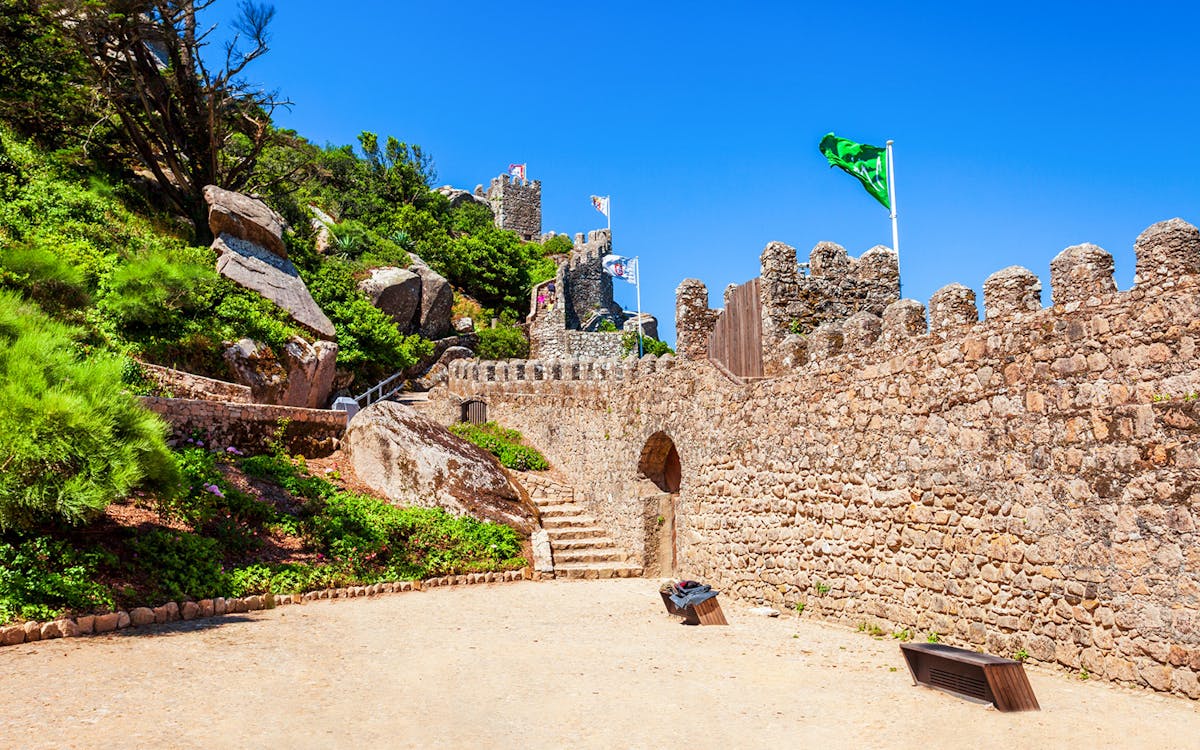
Moorish Castle, the oldest monument in Sintra, occupied a strategic location on top of the Sintra Hills. Built as a fortification, the primary purpose of the castle was to defend the surrounding territory and keep an eye on the maritime access routes to Lisbon. Winding across the two rides on the Sintra Mountains, the Moorish Castle’s architecture beautifully reflects the era in which it was built and its original defensive purpose. Instead of decorative and ornate walls, the snaking walls of the Moorish castle are sturdy and functional. Its sweeping parapet walk gives a great view of the surrounding areas. The views extend from the city of Sintra to the ocean!
The Moorish Castle has been undergoing excavation since 1976 and has given innumerable discoveries that give a wonderful insight into the history of the castle and its inhabitants. The uncovered artifacts have shown that people used to live in the area between the walls and the adjoining areas of the Moorish Castle. This area has now been named the Islamic quarter. You can find silo-type structures carved into rocks, both inside and outside the fortification of the Moorish Castle. This discovery proved that the people who stayed at the Moorish Castle used to store and conserve foodstuffs such as cereals. The battlements and defensive towers of the castle are a magnificent testimony to the past of the fortified Moorish Castle, which makes visiting this castle even more interesting.
Moorish Castle Highlights
1Second Ring of Walls
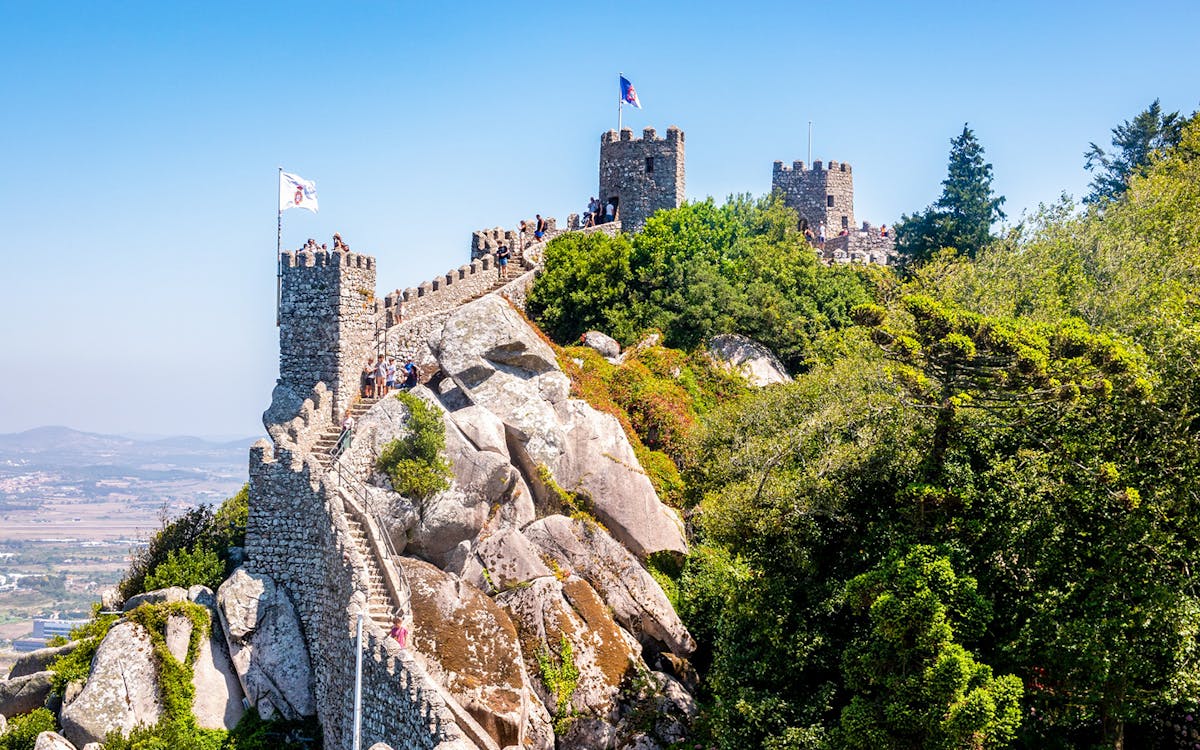
When the Knights Templar took over the defense and care of the Castle, they reinforced the existing structures by adding a second line of walls to protect the animals, harvest, and population better. This added wall of protection was called the Second Ring of Walls, the requirement of which indicates a sizeable population in the immediate vicinity of the castle.
2Silos

Like various other settles that came both before and after the Moors, the Castle also had a considerable amount of silos used for storing leguminous harvest and cereal. Inside the Castle, their cavities have been found in the rocky substrate, semi-spherically shaped, varying in depths and sizes.
3Islamic Neighbourhood
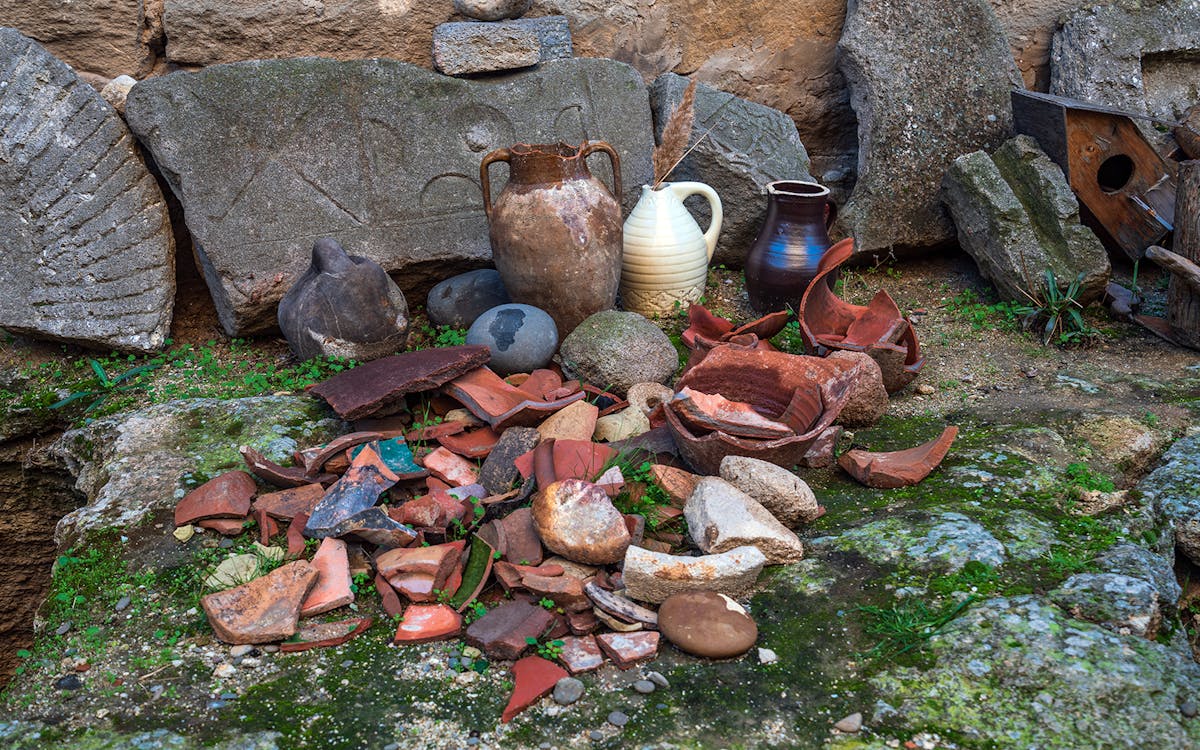
Over the course of many archaeological digs, experts have found numerous items that help us garner a sense of topological Islamic material vulture that prevailed between the 10th and 12th centuries. Artifacts such as baking dishes, bowls, jugs, pots, pans, and more can also be found in addition to a considerable number of instruments used for weaving.
4Tomb
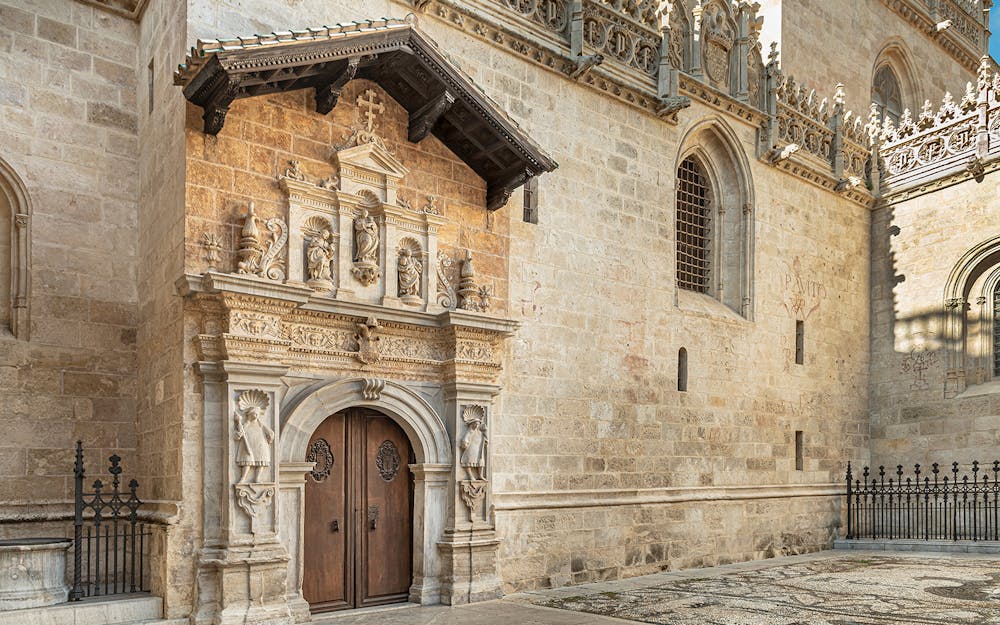
When Ferdinand II set about commissioning works at the Castle, parts of the Christian burial grounds were destroyed due to which a tomb had to be built in order to house the bones found there. Since it was jot possible at that time to distinguish if they were Christian or Moorish human remains, the inscription reads, “What man brought together, only God may separate”.
5Church of São Pedro de Canaferrim

Built of granite, the thick walls of the church were both in the 12th century after Afonso Henriques took over and remained a place of worship till the 14th century. Ferdinand II later transformed the building into a romantic ruin set in the Park of Pena. Today, the Church of São Pedro de Canaferrim stands as the Moorish Castle Interpretation Centre.
6Christian Medieval Necropolis

The conquest by Afonso Henriques led to the Islamic neighborhoods being destroyed and a Christian burial site was built in its stead. Archaeological findings point to the fact that the cemetery was in use for about 300 years in addition to artifacts with Neolithic chronology being found.
7Former Stables
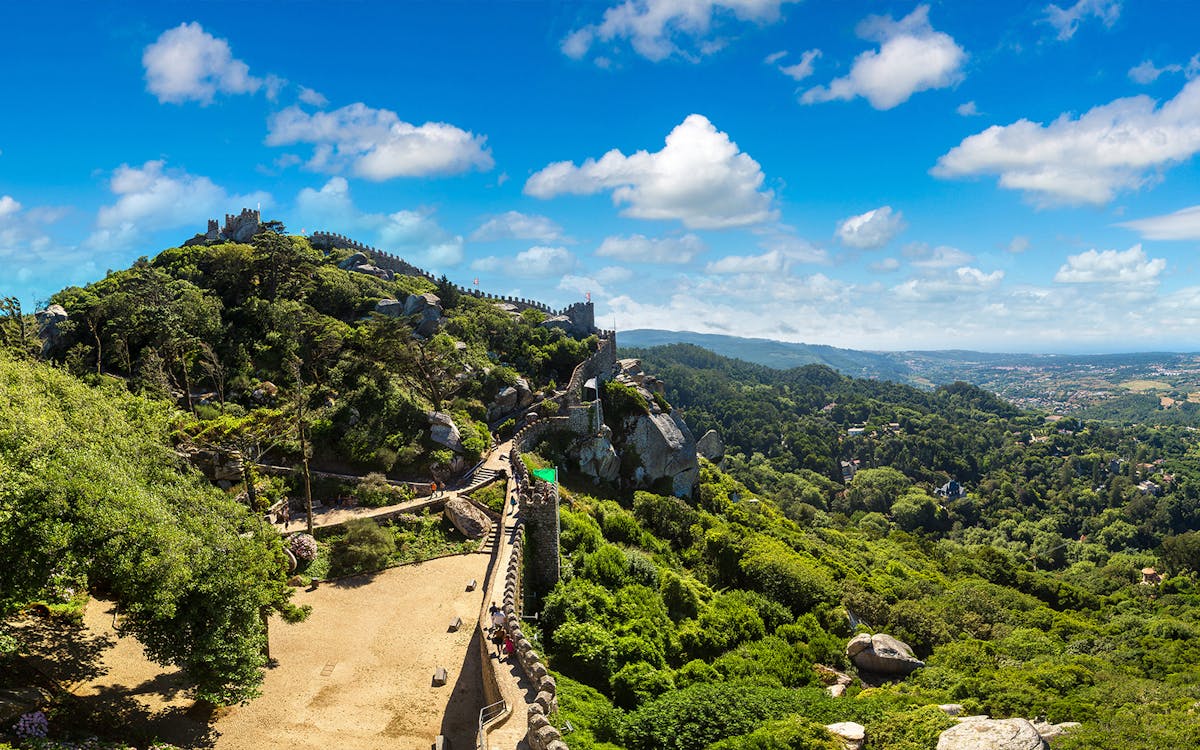
Adjacent to the eastern wall, there are remains of structures that seem to have been covered at one point although their function has not been determined yet. The most popular theory is that these spaces were used as stables and then to house domestic animals.
8Cistern
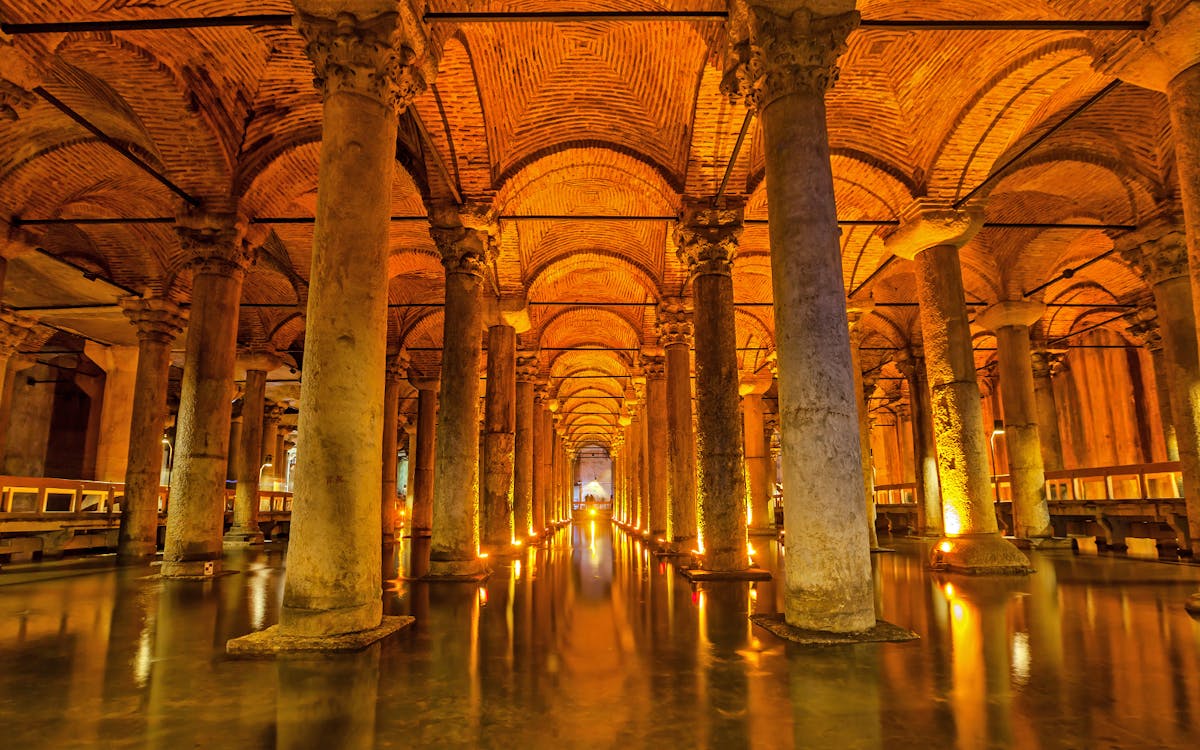
With a massive capacity of 600 cubic meters, the Cistern at the Moorish Castle was covered with a vault and two ventilation chimneys. The Cistern served the dual purpose of providing refuge to people within the castle when they were forced to sit out a siege, and by supplying the water needed by the inhabitants of the Moorish Castle.
9Door of Betrayal
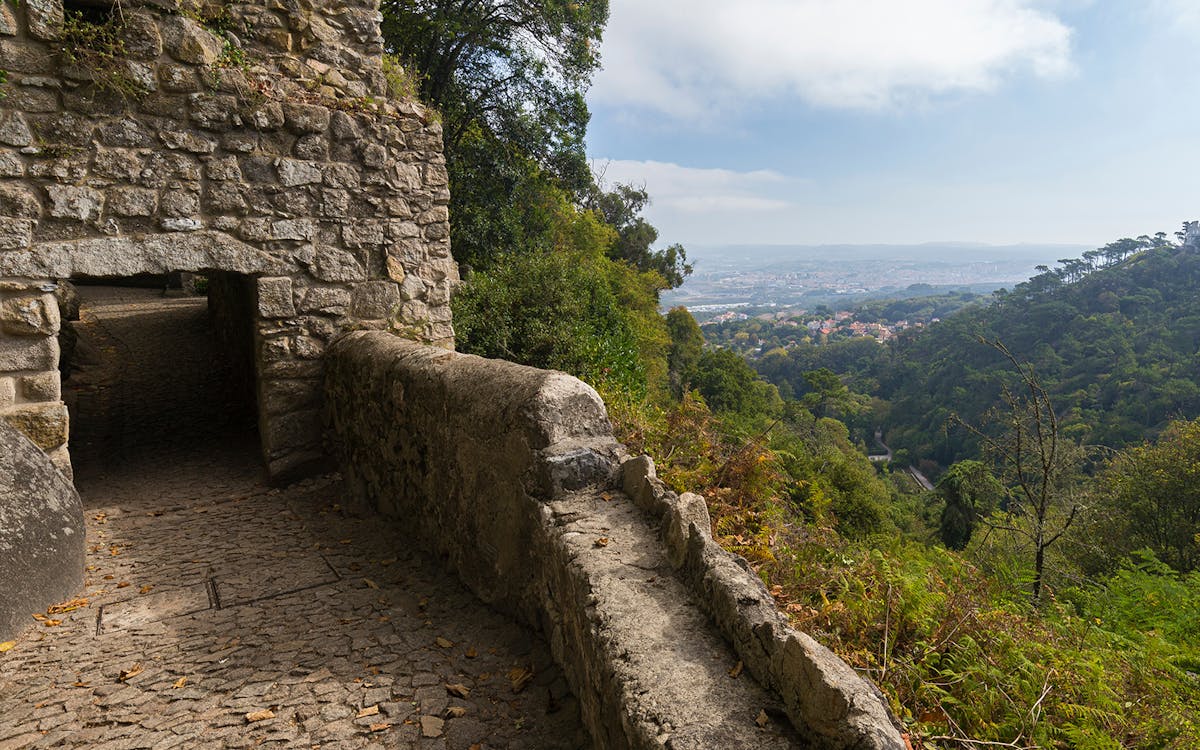
The Door of Betrayal was located in the most uneven and least used part of the Moorish castle. During times of conflict, the door provided discrete access to the outside world and in extreme times, it was used for flight. Since the door was just an opening in the wall, enemies could use it to enter the castle as well.
10Castle Keep
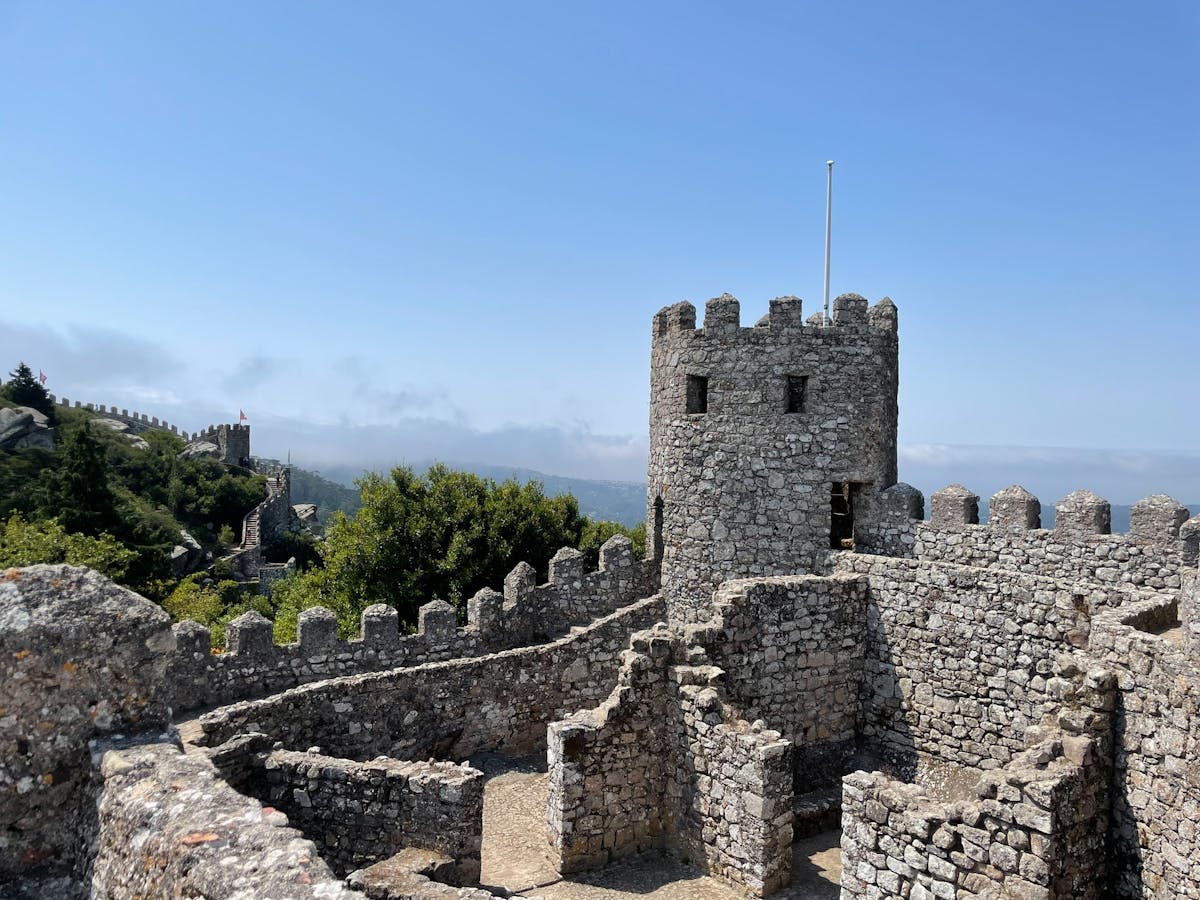
The Castle Keep was a small stronghold where the local authorities lived, and was a part of the main Keep Tower of the Moorish Castle. Built at one of the highest points, the Castle Keep was a highly fortified structure that was visible from the Atlantic Ocean and across the surrounding plains to the north of the hills.
Best Time to Visit

The peak hours for visiting the Moorish Castle are the early afternoon, from 12 pm to 4 pm. To avoid crowds and enjoy a hassle-free visit to the castle, the best time to visit the Moorish Castle would be either early in the morning or late evening.
The Moorish Castle is known for its spectacular views that extend from the city of Sintra to the Atlantic ocean. Summers are a great season to visit the Moorish Castle as you can enjoy the views from the castle, but try visiting the castle in the morning during this time to avoid the summer heat. During the winter months the castle may get shrouded in fog or low-lying clouds which could hamper the otherwise clear views from the Moorish Castle, so plan your visit accordingly.
Moorish Castle Hours
The Moorish Castle is open every day from 9:30 am to 6:30 pm. The last admission to the Castle is at 6 pm.
Moorish Castle: How to Reach
By Train - If you are going from Lisbon, take the Train (CP) on the Sintra Line. You can catch a train from the Oriente, Rossio, and Entrecampos train stations.
By Bus - From Sintra, take Bus number 434 to Moorish Castle.
By Taxi/Car - If you are traveling from Lisbon, follow the IC19 road to Sintra. From Mafra, take the IC30 road to reach Sintra. You can also reach Sintra from Cascais via the A5 and EN9 roads.
Restaurants Nearby

One of the oldest restaurants in Sintra, the Cantinho de São Pedro is embedded in the Sintra Hills. Serving fresh and quality food, the restaurant primarily serves Portuguese cuisine and even has some options for vegetarians.

Another restaurant worth trying is A Mourisca de Sintra. With friendly staff, good service, reasonable prices, and good quality food, A Mourisca de Sintra is one of the few eateries near Moorish Castle.

If you want to indulge in some delicious tapas and wine after visiting the Moorish Castle, stop to eat a Tascantiga. With its relaxing and casual ambiance, this restaurant is a great place to unwind.

A local favorite, the Bono Lisboa restaurant specializes in Mediterranean cuisine. With its wonderful atmosphere and exceptional food that is made from fresh and locally-sourced ingredients, this restaurant is worth a try!

Another great place to try out in Sintra is the Bacalhau Na Vila. Known for its food that looks as good as it tastes, the Bacalhau Na Vila is a great place to eat a hearty meal after exploring the Moorish Castle.
Moorish Castle Facts that you probably Didn’t Know
- The highest tower of the Moorish Castle-the Royal Tower is located towards the southwest of the castle.
- The chapel that you see inside the castle was constructed using limestone and masonry.
- Before the ‘Reconquista,’ the chapel functioned as a mosque.
- You can see as far as the Atlantic Ocean from the Moorish Castle.
- The Castle was constructed as a defensive and fortified structure. It was used to protect the surrounding areas and keep an eye on the maritime routes through which Lisbon could be accessed.
- The Moorish Castle was founded under Islamic Rule. The area between the walls of the castle and the adjoining areas is known as the ‘Islamic Quarter’.
Moorish Castle Insider Tips
- The climb to the tower is steep, so wear comfortable shoes on the day of your visit to the Moorish Castle.
- Avoid visiting the castle between 12 pm and 4 pm, since during this time the castle is very crowded.
- Keep yourself well-hydrated during your visit to the Moorish Castle.
- During winters, the Moorish Castle is sometimes shrouded in fog and low-lying clouds. Due to this, you are unable to see the stunning views from the castle.
- Carry a pair of sunglasses, a hat, and a water bottle when visiting the Moorish Castle during the summers.
- If you are visiting the Moorish Castle with children, make sure that you keep them at a safe distance from the walls of the castle.
- The best time to visit the Moorish Castle is during early mornings or late evenings.
Other Attractions Around Moorish Castle
FAQs
The Moorish Castle is open from 9:30 am to 6:30 pm. The last entry to the castle is at 6 pm.
It should take you around 60 to 90 minutes to explore the Moorish Castle.
The Moorish Castle is known for its gorgeous views of Sintra and the ocean. The best time to admire the views here is during the summers or when the castle is not shrouded in fog and low-lying clouds during the winters.
Yes, the Moorish Castle is accessible by wheelchair. You just have to inform a member of staff and they will provide you with all the necessary assistance.
We recommend visiting the Moorish Castle in the early morning or during the late evenings. Avoid visiting the castle from 12 pm to 4 pm, since the castle is extremely crowded during this time.








